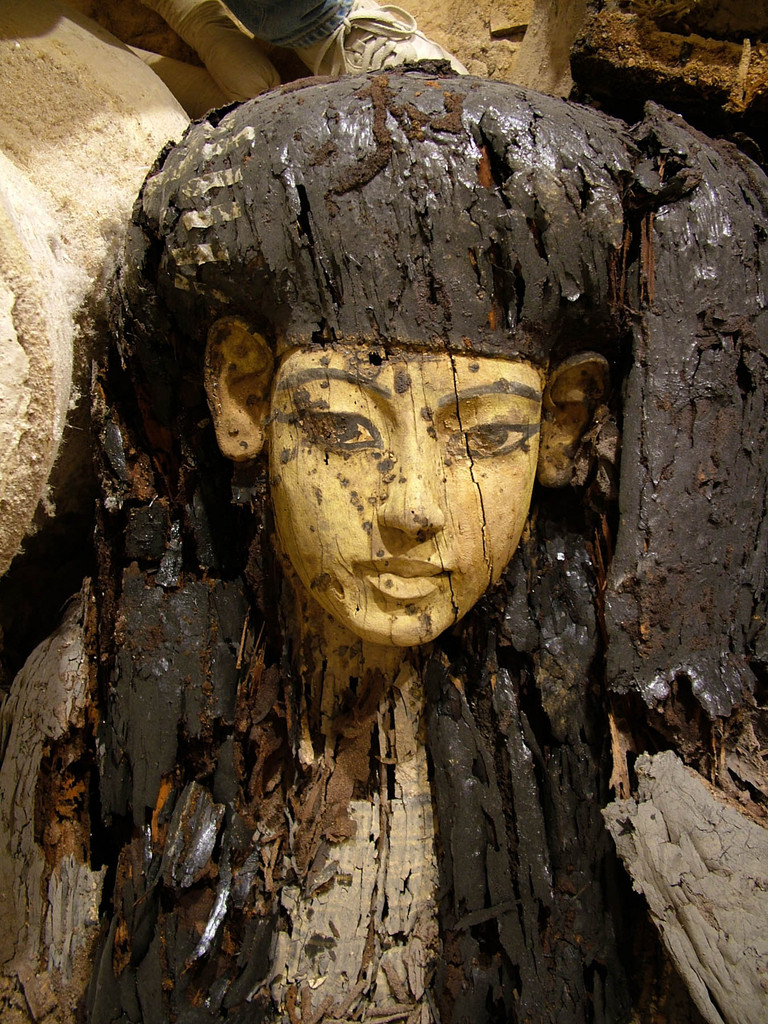The excavators nicknamed her 'The Princess', which is a much more romantic label than 'Coffin F'.
This is the stunning lid of one of the coffins found in KV63, the first tomb discovered in the Valley of the Kings in 83 years.
Before Howard Carter discovered the Tomb of Tutankhamun (KV62) in 1922, the popular consensus was that the Valley of the Kings in Luxor was exhausted - picked clean by generations of treasure-hunters and archaeologists.
Tutankhamun changed everything. And now it seems almost certain that the Valley of the Kings hasn't yielded all its secrets.
Dr. Otto Schaden from the University of Memphis discovered KV (King's Valley) 63 on 10th March 2005, around 15 metres from Tutankhamun's tomb. His team were excavating the remains of stone huts used by the workmen who built the royal tombs when they uncovered the lip of a shaft cut into the bedrock.
There are a number of high-profile royals whose tombs and remains haven't yet been found, so expectations were high that KV63 may prove to be a cache of royal mummies.
However KV63 wasn't a tomb in the proper sense; it was a storeroom – what Egyptologists call an ‘embalming cache.’ KV63 contained 28 large jars and seven coffins – including a small gilded one built for a child. The coffins were used as storage chests. Instead of containing bodies, they were filled with an assortment of elaborate floral collars, broken pots, cloth and natron – the natural salt used to dry out bodies to become mummies. This was the left over material from the mummification of at least one royal body, and the funerary rituals surrounding the burial.
Also found was a unique wooden 'bed'; a frame most likely used to support the mummy in a standing position for the 'Opening of the Mouth' ceremony. This was where the senses of the deceased were magically restored for the journey to the afterlife.
The design of the coffins and jars, as well as a few fragmentary inscriptions, all point to an 18th Dynasty date, roughly contemporary with Tutankhamun.
Naturally all this leads to the big question: if KV63 is a cache of funerary equipment, where are the bodies? Just as an embalming cache for Tutankhamun was found a few years before his actual tomb was discovered, let's hope that KV63 is also a precursor to a future find.
Let's keep digging!
Photo: Heather Alexander
